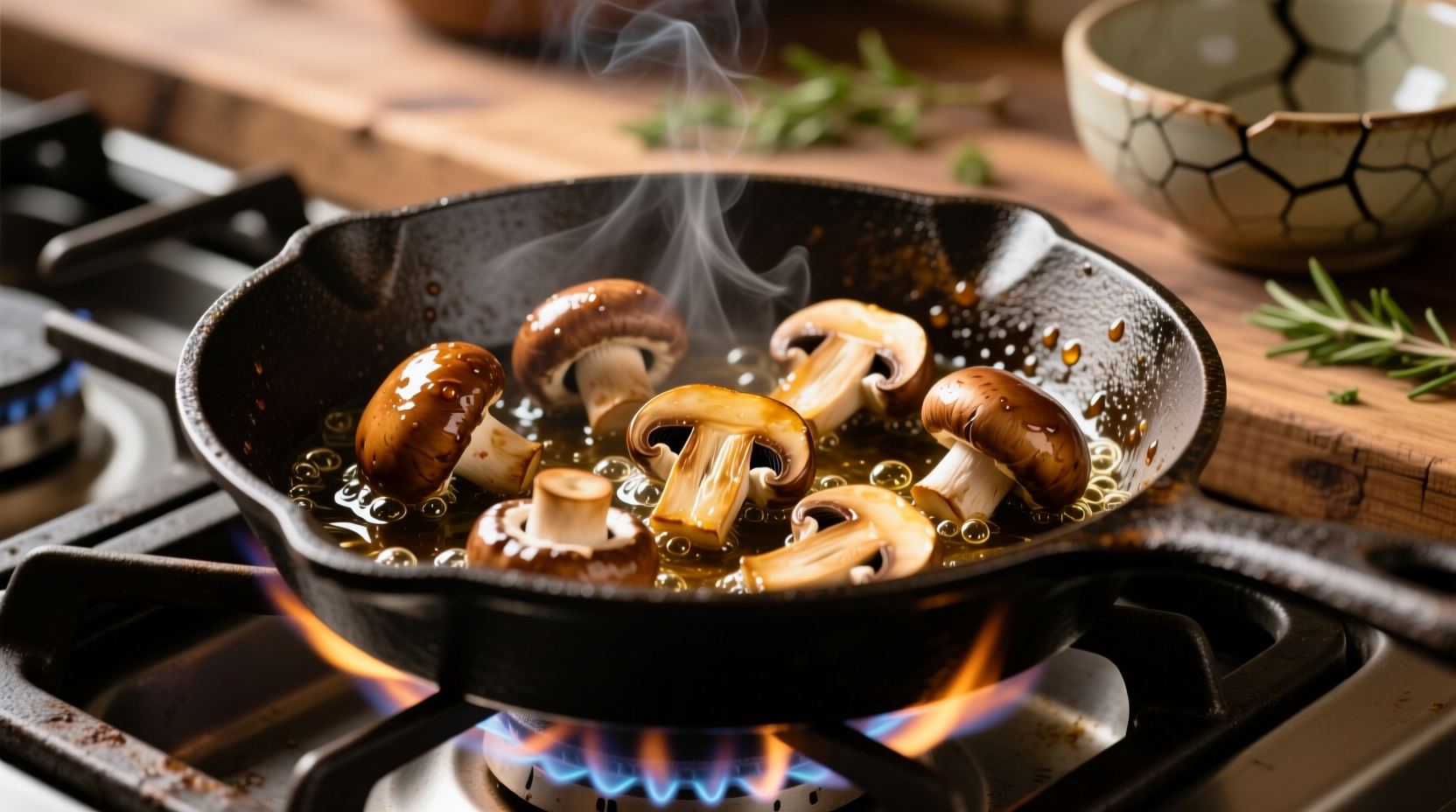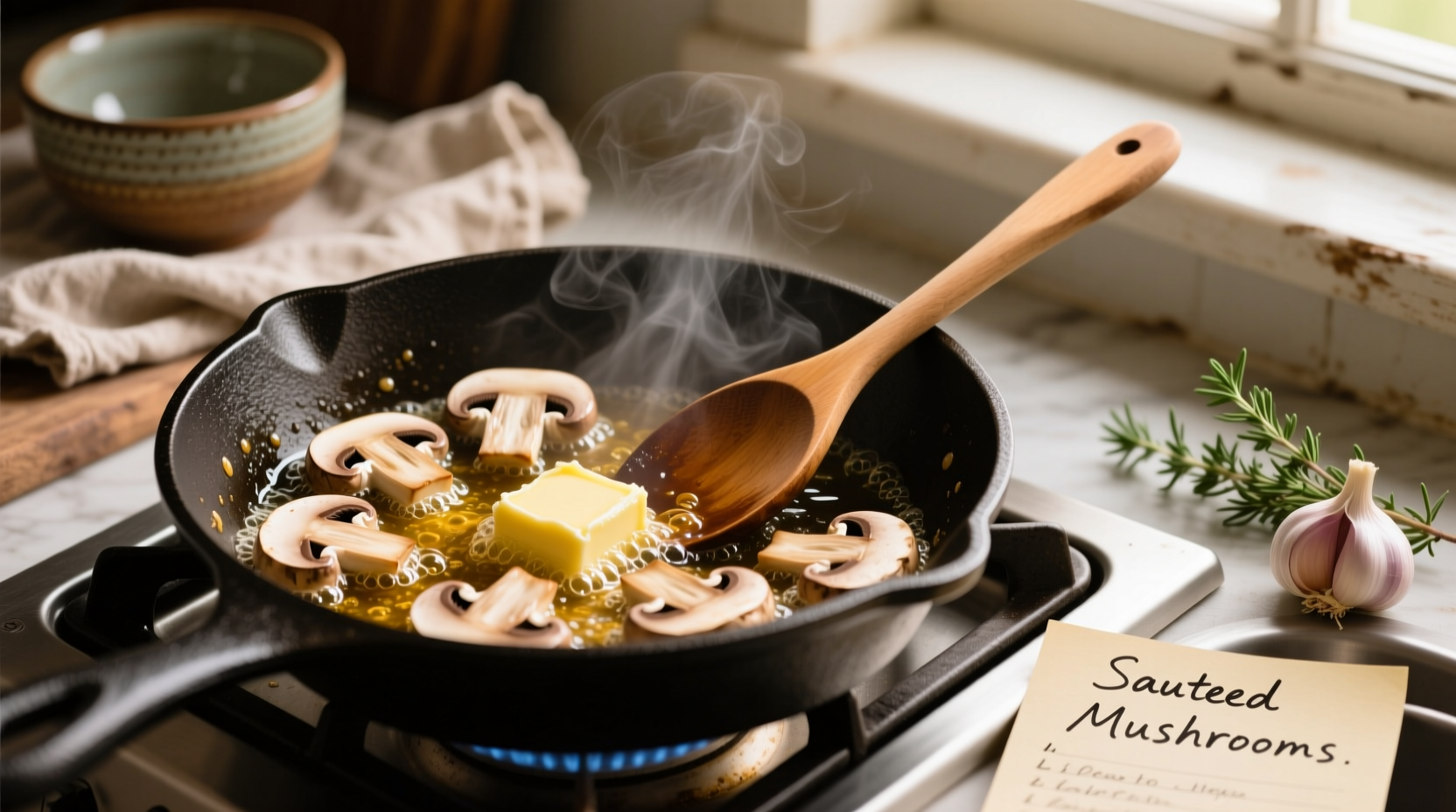Discover exactly how to cook mushrooms to achieve restaurant-quality results at home. This comprehensive guide reveals professional techniques for selecting, cleaning, and cooking mushrooms using multiple methods. You'll learn why common mistakes lead to soggy mushrooms and how to consistently create beautifully browned, flavorful results every time—whether you're making a simple side dish or incorporating mushrooms into complex recipes.
Choosing & Preparing Mushrooms Properly
Select firm, dry mushrooms with smooth caps and no dark spots. While many believe mushrooms shouldn't be washed, modern food safety guidelines from the U.S. Food and Drug Administration confirm that gently rinsing mushrooms under cool water is safe and effective for removing dirt.
| Preparation Method | Best For | Time Required |
|---|---|---|
| Gentle rinse + paper towel dry | All cooking methods | 3-5 minutes |
| Damp cloth wipe | Delicate varieties (morels, chanterelles) | 5-7 minutes |
| Brush cleaning | Wild mushrooms with deep crevices | 7-10 minutes |
After cleaning, slice mushrooms evenly to ensure consistent cooking. Thicker slices work best for grilling, while uniform ¼-inch slices are ideal for sautéing. Never skip the crucial drying step—moisture is the enemy of proper browning.
Mastering the Sauté Technique: Step-by-Step
Sautéing delivers the fastest, most reliable results for cooking mushrooms at home. Follow these science-backed steps:
- Heat 1-2 tablespoons of high-smoke point oil (avocado or grapeseed) in a large skillet over medium-high heat until shimmering
- Add mushrooms in a single layer without crowding—this is critical for proper browning
- Resist stirring for 3-4 minutes to allow the Maillard reaction to occur
- When mushrooms release their liquid, continue cooking until it evaporates
- Flip and cook 2-3 more minutes until deeply browned
- Add aromatics like garlic during the last minute of cooking
Mushroom Cooking Timeline (Per Batch)
0-3 min: Initial sear, minimal liquid release
3-6 min: Liquid release phase, mushrooms appear soggy
6-9 min: Liquid evaporates, browning begins
9-12 min: Deep golden crust develops, rich umami flavors emerge

Alternative Cooking Methods Compared
While sautéing works best for most home cooks, different techniques serve specific purposes:
Roasting Mushrooms
Perfect for larger batches. Toss mushrooms with oil, spread on a parchment-lined baking sheet, and roast at 425°F (220°C) for 20-25 minutes, flipping once. Roasting concentrates flavor but requires longer cooking time than sautéing.
Grilling Mushrooms
Ideal for portobello caps. Brush with oil, season, and grill over medium heat for 4-5 minutes per side. The high direct heat creates attractive grill marks while preserving meaty texture.
Context Matters: When to Use Each Method
Professional chefs at the Culinary Institute of America note that sautéing works best when you need mushrooms quickly for pasta or steak toppings. Roasting shines when preparing mushrooms as a standalone side dish, while grilling adds smoky complexity perfect for vegetarian burgers. Never use boiling or steaming for mushrooms—these methods guarantee soggy results by introducing additional moisture.
Flavor Enhancement Secrets
Timing matters when adding flavor elements. Contrary to popular belief, adding salt at the beginning actually helps draw out moisture faster, leading to better browning. After mushrooms develop their crust:
- Add 1-2 minced garlic cloves during the last 60 seconds of cooking
- Finish with 1-2 tablespoons of dry white wine or sherry vinegar
- Stir in fresh herbs like thyme or rosemary just before serving
- Add a pat of cold butter at the end for professional sheen
According to research published in the Journal of Food Science, the combination of heat and acid (like wine or vinegar) enhances the umami compounds in mushrooms by up to 30%, creating significantly deeper flavor.
Avoid These Common Mushroom Mistakes
Even experienced home cooks make these critical errors:
- Overcrowding the pan: Creates steam instead of sear—cook in batches if necessary
- Stirring too frequently: Prevents proper browning—let mushrooms sit undisturbed
- Using low heat: Extends cooking time and prevents caramelization
- Adding cold ingredients: Lowers pan temperature—have everything ready beforehand
Delicious Ways to Use Perfectly Cooked Mushrooms
Transform your mushroom skills into complete dishes:
- Top grilled steak or chicken with sautéed mushrooms and herbs
- Make a creamy mushroom risotto using roasted mushrooms
- Create a vegetarian "steak" with marinated grilled portobellos
- Add to omelets or frittatas for breakfast
- Mix into pasta sauces for extra umami depth
Store leftover cooked mushrooms in an airtight container in the refrigerator for up to 4 days. Reheat gently in a skillet to maintain texture—microwaving makes them rubbery.











 浙公网安备
33010002000092号
浙公网安备
33010002000092号 浙B2-20120091-4
浙B2-20120091-4